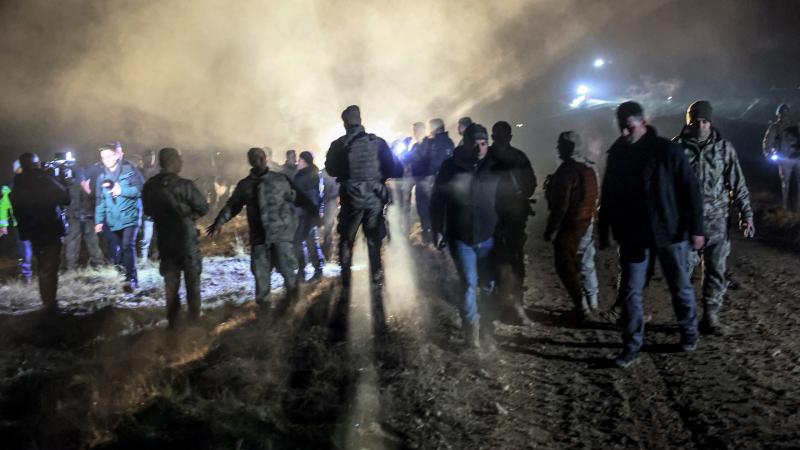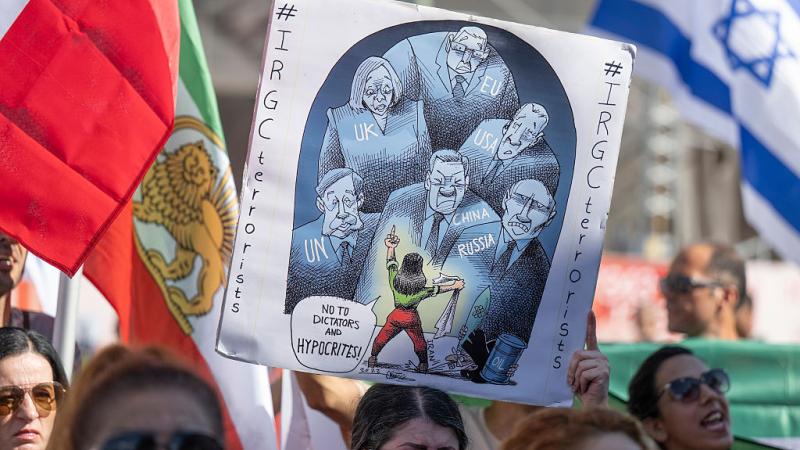'Not the target and they know it': Security sources rebut claim IDF targeted media in Gaza strike
Amid media outcry, IDF says high-rise that housed AP was Hamas R&D site and journalists received ample advance warning.
Media outcry over Israel's bombing of a high-rise building in Gaza stems from misleading reports, and is based on incomplete information, according to a diverse chorus of military and civilian voices.
Israel destroyed the 11-story al-Jalaa tower building on Saturday, aiming to take out a network of offices used by militant organizations, the Israeli Defense Forces said. The outcry arose because the building also housed the Gaza bureaus of the Associated Press and Al-Jazeera, whose executives have called for investigations into the May 15 incident.
In a statement whose headline referenced "the destruction of AP's Gaza bureau," the news organization's CEO, Gary Pruitt, decried the attack.
"We are shocked and horrified that the Israeli military would target and destroy the building housing AP's bureau and other news organizations in Gaza," Pruitt said. "They have long known the location of our bureau and knew journalists were there."
Soon after the strike, the Jerusalem Post reported that the U.S. was given "smoking gun" proof that Hamas used the building.
Confusion about the proof arose though when Secretary of State Antony Blinken on Monday said that he personally had not seen evidence to support Israel's claim. The comment from Blinken has been viewed to mean either that no evidence was provided, or that the diplomat had not yet looked at the evidence in hand.
The White House on May 17 seemed to take the latter interpretation.
"What I believe the State Department has confirmed is that the Secretary was saying he has not personally seen the intelligence because such matters would be appropriately — be handled through intelligence channels," White House press secretary Jen Psaki told reporters. "So that's not necessarily a surprise. But in terms of who has or hasn't seen it, what's been communicated, I'm just not going to be in a position to confirm that."
The outcry surrounding the attack is based on misconceptions, according to the Israeli military.
"It's not a media tower, and it's not a media center," said Lt. Col. Jonathan Conricus, a spokesman for the IDF. The building was an important militant hub for Hamas, as well as for Palestinian Islamic Jihad, he said. The militants used the building for military purposes, to include "research and development, where the best subject matter experts were operating from inside that building, using the hardware, computers and other facilities inside the building to develop weapons, military weapons against us as well."
The IDF claims were bolstered by a former AP journalist who is based in Israel, and who has written extensively about conflict in the region.
"The army legal advisers who approve these strikes were convinced that the intel and the military logic could be defended, meaning they saw proof," wrote journalist Matti Friedman on Twitter. "And because hitting press offices is a net negative for Israel, the army seems to have had a target it considered worth the fallout."
The fallout included condemnation from AP and Al Jazeera, and also from international media. Joel Simon, who leads the Committee to Protect Journalists, said that the strike "raises the specter that the Israel Defense Forces is deliberately targeting media facilities in order to disrupt coverage of the human suffering in Gaza."
Comments such as Simon's only further muddle an already unclear situation, Friedman noted.
"The AP 'news story,' which stated without evidence that Israel was targeting reporters to silence them, says nothing about what happened but a great deal about journalism," Friedman tweeted. "It's an enormous problem for sane people just trying to get a handle on complex and disturbing events."
The AP's Pruitt portrayed a dire scene at the building on the day the building was destroyed.
"This strike is an incredibly disturbing development," Pruitt said. "We narrowly avoided a terrible loss of life. A dozen AP journalists and freelancers were inside the building and thankfully we were able to evacuate them in time."
The journalists inside the building were warned in advance, one IDF intelligence officer told Just the News. The active duty officer, speaking from Tel Aviv, said that Israeli military officials gave an hour's warning to journalists and to civilians who lived in the building.
"They were not the target, and they know it," the officer said. "We gave them time to get out safely."
One AP journalist asked for more time, according to one report.
"Just give me 15 minutes," the journalist asked while speaking on the phone to an Israeli intelligence official. "We have a lot of equipment, including the cameras, other things. I can bring all of it out."
The exchange shows that the journalists had ample opportunity to evacuate, and were willing to remain for a time inside the building, the officer said. "This isn't a situation where they barely made it out," he said.
In other comments from Pruitt, the wire service chief further maintained that the AP had "no indication of a Hamas presence in the building, nor were we warned of any such possible presence before the airstrike."
Others disagreed, including a former aide to President Barack Obama, who seemed to support the notion that journalists knew that Hamas worked inside the building. Following a series of comments that drew attention on Twitter, Tommy Vietor on Monday told Fox News: "A journalist friend who used to work out of that building told me Hamas worked out of it, too."
Hamas deliberately hides military targets in residential buildings and civilian areas, according to the IDF.
"Prior to such strikes, the IDF takes every feasible measure to enable civilians to evacuate the building and to mitigate damage to civilian people and property," the Israeli military wing said.
The Associated Press did not immediately respond to emailed questions from Just the News.















